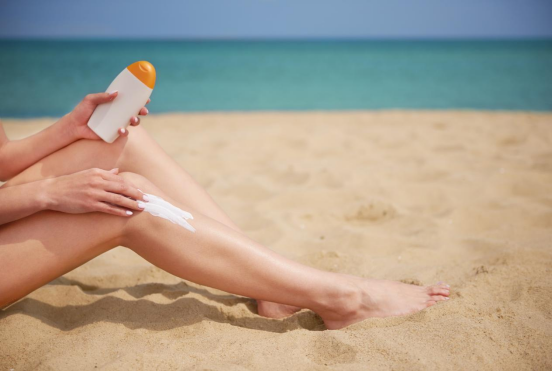The Power of Physical Sun Block: A Deep Dive into Its Star Contents

As consumers become progressively savvy regarding skin care, the discussion between chemical and physical sunscreens remains to be a warm subject. While both offer essential protection against the sun's unsafe ultraviolet (UV) rays, physical sunscreens are typically admired for their mild yet reliable solution, making them a preferred option for those with sensitive or responsive skin. The key to their success hinges on their energetic components, which create a physical barrier on the skin to block out UV radiation. This article will certainly look into the globe of physical sunscreens, focusing on their key ingredients: zinc oxide and titanium dioxide.
Unlike their chemical counterparts, which take in UV radiation and convert it into warm, physical sunscreens work by sitting on top of the skin to form a shield that deflects and scatters both UVA and UVB rays. This mechanism is why they are frequently referred to as "sunblocks." The primary advantage of this method is its immediate effectiveness upon application and the lower likelihood of causing skin irritation, as the active ingredients are not soaked up right into the skin.
One of the most renowned component in the physical sunscreen household is Zinc Oxide. This giant mineral is one-of-a-kind in its capacity to give broad-spectrum defense, suggesting it properly safeguards the skin against the full range of UVA and UVB rays. UVA rays are responsible for early aging, consisting of wrinkles and fine lines, while UVB rays are the primary source of sunburn. By using detailed protection versus both, zinc oxide plays a critical function in avoiding sun damages and minimizing the risk of skin cancer cells.
In addition, zinc oxide is renowned for its soothing residential properties. It has been made use of for centuries to deal with minor skin irritabilities, rashes, and burns, a testimony to its mild nature. This makes sunscreens created with zinc oxide an optimal choice for people with sensitive skin, acne-prone skin, or problems like rosacea and eczema. Its non-comedogenic properties likewise mean it is much less likely to obstruct pores, a common problem for those with oily or combination skin.
The various other key player in the physical sun block category is Titanium Dioxide. This normally occurring mineral is one more physical sunscreen ingredients outstanding active ingredient for producing a physical obstacle against UV rays. It is extremely effective at showing and spreading UVB radiation, offering durable defense against sunburn. While it uses good security across the UVB range, it is typically considered much less effective versus long-wave UVA rays contrasted to zinc oxide.
Therefore, titanium dioxide is often utilized combined with zinc oxide in sun block solutions. This combination develops a synergistic result, improving the overall broad-spectrum security of the item. By leveraging the toughness of both ingredients, formulators can create a sunscreen that uses extensive and trusted defense against the sun's harmful rays. Like zinc oxide, titanium dioxide is likewise mild on the skin and is an ideal option for those with sensitive or easily inflamed skin.
In recent times, advancements in formulation innovation have attended to among the preliminary downsides of physical sun blocks: the thick, white cast they would typically leave on the skin. Modern formulas now utilize micronized or nano-sized bits of zinc oxide and titanium dioxide, which enables a much more cosmetically stylish application without jeopardizing their protective capabilities. This implies you can delight in the gentle, effective protection of a physical sunscreen without the telltale white deposit.
To conclude, physical sunscreens provide a reputable and gentle way to shield your skin from the sunlight. Their celebrity components, zinc oxide and titanium dioxide, work in harmony to develop a physical guard that deflects damaging UVA and UVB rays. With their outstanding safety profile and viability for all skin types, especially sensitive skin, physical sun blocks are a powerful force in the fight versus sunlight damage. The following time you are Surf the sunscreen aisle, consider the effective, safety, and skin-loving benefits of a physical solution.